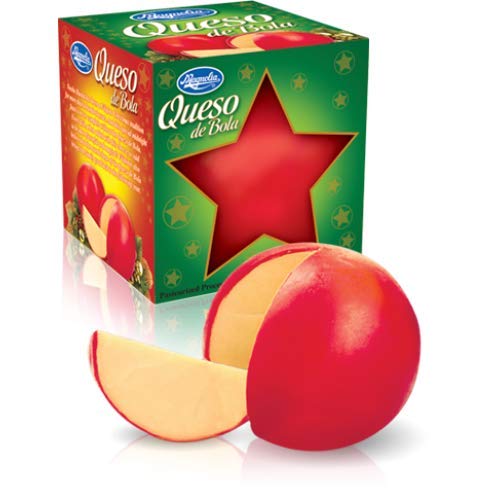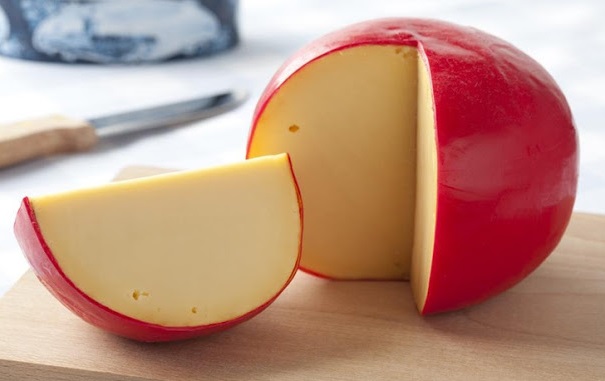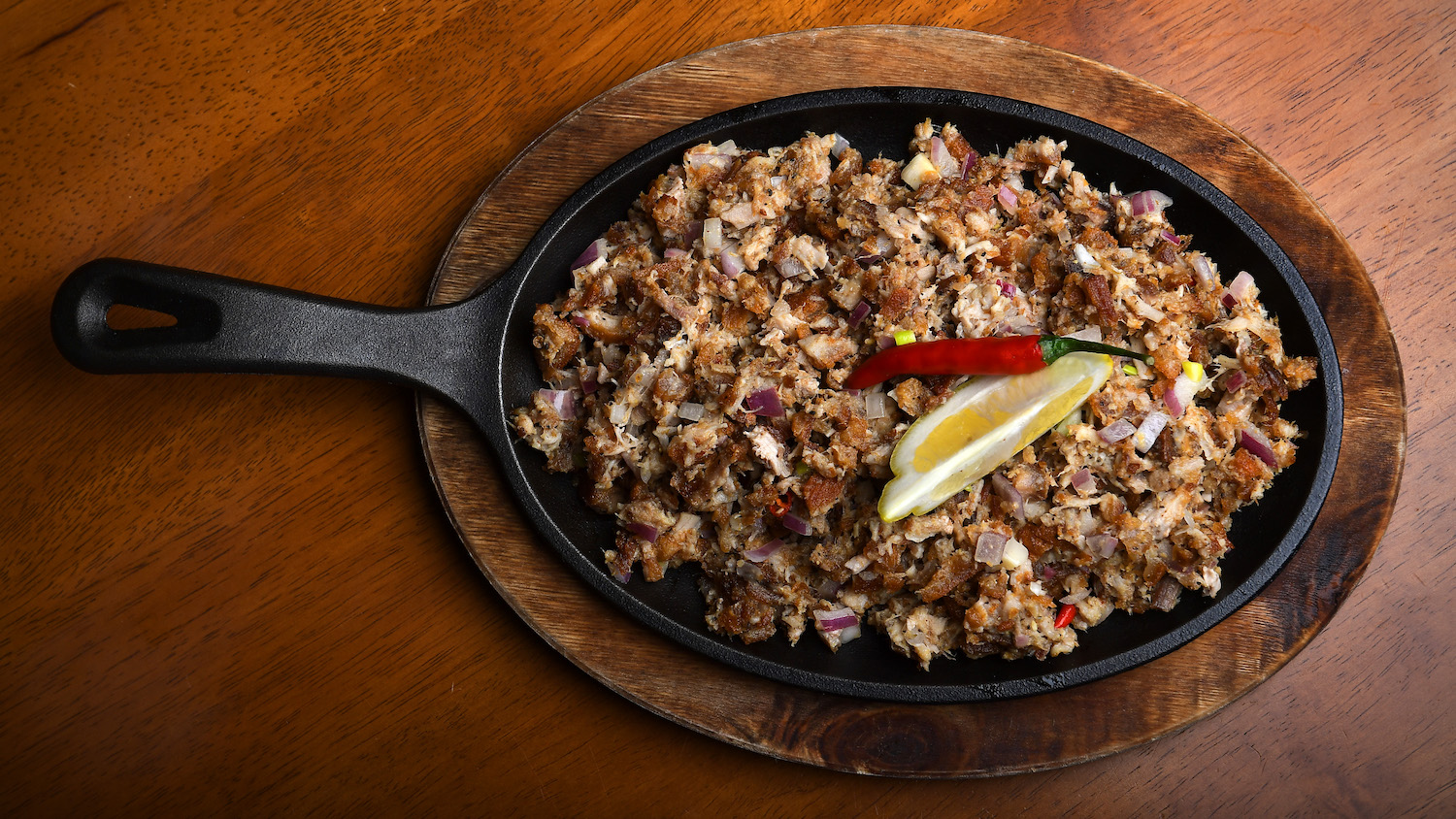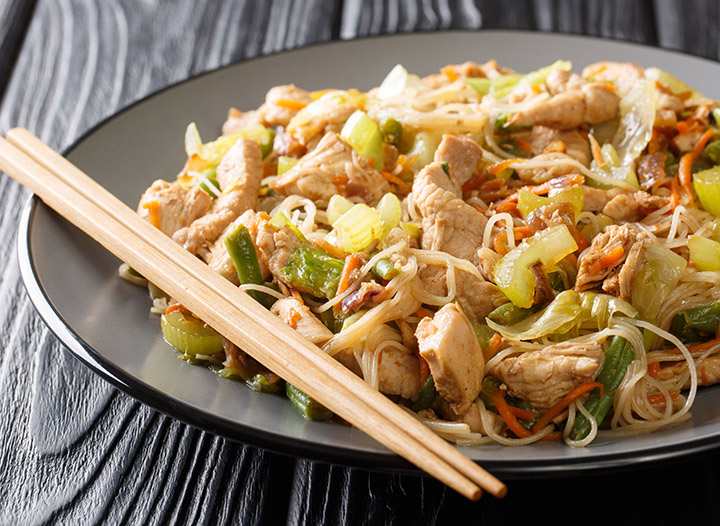Growing up as a Filipino American, I knew that when I saw that big ball of cheese wrapped in red, crinkly paper, it was officially Christmastime.
Cheese isn’t common in Filipino food, but when you see it, there’s a good chance it’s queso de bola, or “ball of cheese.” It’s exactly as it sounds: a spherical shape of cheese that’s coated in red wax. Sort of like a giant Babybel.
This pale yellow cheese is sharp, salty and nutty, with a whiff of delicious stink. It’s a semi-hard cheese that continues to harden over time.
And it has an interesting history. To sum it up: It’s a traditional Filipino cheese that originated in Holland, and that is a beloved part of cuisines around the world.
Read on to learn the role queso de bola plays in Filipino Christmas dinner, how it’s typically served, and how a Dutch cheese became such a big part of many different countries’ cuisines.
Queso de Bola as a Christmas Tradition
For Filipinos, the holiday season is also time to be spent with family, to be grateful for the year past, and to hope for a prosperous new year ahead. Much of this is symbolized through the holiday foods.
Typically during Christmas season, you’ll see platters of pancit — not just because the noodle dish is easy to make en masse — but because the noodles symbolize long life. You’ll also see queso de bola for its symbolism: it comes in rounds, so it represents money or wealth, and its red rind represents good luck.
The cheese is a big part of Noche Buena, the midnight feast on Christmas Eve. In the Philippines, where people are predominantly Catholic, it’s tradition for families to attend evening mass on Christmas Eve. Then everyone goes home to a feast, which starts around midnight and stretches into the wee hours of Christmas morning. At these feasts, queso de bola often features prominently among pancit, hamon, Filipino fruit salad, and other traditional dishes.
How It’s Typically Used in Filipino Recipes
This cheese is used in all kinds of dishes, from savory to sweet, and used as a mix-in for meatloaf or as a topping.
Filipino Charcuterie and Meatloaf
Queso de bola is most often sliced and eaten with hamon (the Tagalog spelling for the Spanish “jamon”) and pandesal. Hamon is a salty dry-cured ham. Pandesal is the fluffy traditional bread roll of the Philippines, usually eaten as a first breakfast with coffee, or sometimes with ice cream served by a street vendor.
Then there is embutido, a sort of combination of sausage and meatloaf. This dish uses ground pork wrapped around sausage and egg—and recipes often include queso de bola.
Less traditionally, but very deliciously, this cheese can be used in Filipino fondue. Burnt Lumpia has a recipe using a melted mix of grated queso, cornstarch, garlic, calamansi, and San Miguel beer. The recipe suggests dipping cubed pandesal, hamon, apples, pears, or even longanisa (or Filipino sausage) into this fondue.
Desserts and Pastries
Filipinos also use this cheese as an ingredient in desserts and pastries. You might see it paired often with ube, or purple yam, as sweet ube makes for a nice complement to sharp queso. This pairing might come in the form of ube pandesal with cheese — where the bread roll is made with ube and then topped with grated queso de bola.
You might also see the combination in modern cheesecake recipes. Butter, cream cheese, sugar, eggs, and grated queso are beaten together before baking. Sometimes ube, or purple yam, is incorporated in the batter as well.
But more commonly, you’ll see queso de bola as a topping for ensaymada and bibingka.

Ensaymadas are pastries that are similar to brioche, but topped with butter, grated queso de bola cheese and sugar, and then baked to gooey perfection.
Bibingka is a sweet rice cake that’s baked in banana leaves. Bibingka batter is usually made with yeas, water, sugar, coconut milk, and eggs. Once the batter is poured into the banana leaf-lined pan, shredded queso de bola is sprinkled on top, and then baked until melted.
So… Where Did Queso de Bola Come From?
As rich as it tastes, queso de bola has an even richer history. Over the centuries, it has become a beloved staple across countries all over the world.
It used to be imported or brought back to the Philippines by wealthy travelers, so it was once considered a treat for the rich. Though it’s still a decadent cheese, it is more readily accessible than it was hundreds of years ago.
But while queso de bola is considered a traditional Filipino food, it didn’t originate there. It actually came from the Netherlands.
During the 1600s, the Dutch were at war with the Spanish, often engaged in naval battles near the Philippines. During this time, Filipinos secretly traded with the Dutch — and Dutch naval officers traded one of their staple foods, cheese, with the Filipinos.
Even though the Philippines were under the control of the Spanish until 1898, the Dutch spent two centuries as a major ocean-faring trading power. So the Dutch traded cheese not only with the Philippines, but with other countries, too, like Belize, Venezuela, and Mexico.
Of course, this cheese goes by different names in different places. “Queso de bola” is its Filipino name while the original Dutch name is “Edam,” named for the town in the Netherlands where it originated. Indonesians call it “keju edam.” In Belize, it is called both “queso de calavera” and “queso de Colorado.” And in Mexico, it’s known as “queso holandés.”
A Well-Traveled Cheese
Between the 16th and 18th centuries, queso de bola was the most popular cheese worldwide. Then, it was the Netherland’s largest agricultural export, and even today, 80% to 90% of all Edam cheese produced in the Netherlands is for shipping to elsewhere in the world.
There’s a reason this cheese is so well-traveled: It ages well and it keeps well. So it’s easy to ship on long ocean voyages. Many people prefer queso de bola as it ages because the flavor sharpens. And its form factor helps it stay fresh and intact.
Queso de bola’s, round shape ensures it won’t break apart in transit. The moisture content is balanced so that it’s not prone to molding or rotting quickly. That moisture stays balanced with its red paraffin wax rind, which isn’t just key to its flavor — it’s for profits, too. If the cheese were to lose its water content, it’ll shrink, decreasing sellers’ profit per ounce.
Edam Cheese Across International Cuisine
If you’re deeply familiar with Mexican cuisine, you may have heard of queso relleno. This dish originated in Yucatán, Mexico. A round of the cheese, called queso holandés, is hollowed out and filled with minced meat, raisins, olives, and spices.
The cheese is also used in the popular Indonesian kastengel, or cheese sticks. Flour, cornstarch and salt are added to whipped butter and sugar. Then the grated cheese is stirred in. Afterwards, the dough is rolled and sliced, and then baked.
And then of course, Edam cheese is popular in its homeland of Holland. It’s often paired with fruits like apples, pears, apricots, peaches and cherries either as an appetizer or dessert.
Where Can You Buy Queso de Bola in the U.S.?
You might find queso de bola or Edam cheese in the specialty cheese sections of larger grocery stores, at ethnic markets, or in cheese shops. Popular brands include Che-Vital, Magnolia, Marca Piña, and Marca Pato.

Magnolia queso de bola is said to be slightly softer and more malleable. Marca Pato and Marca Piña, the main competitors, have a more crumbly texture. In its review of these leading competitors, Pepper.ph noted that Marca Pato’s red wax is drier to the touch, and the cheese is creamier than Marca Piña’s. Marca Piña cheese, on the other hand, has almost a powdery salty texture on the tongue.
If you’re looking for those specific brands, you should be able to find them online. After all, this cheese was designed to ship long distances safely without refrigeration. You can find queso de bola on Amazon and other online retailers.
What makes queso de bola so interesting is that even though it didn’t originate in the Philippines, it’s one of those foods that Pinoys adapted from another culture and made uniquely their own.
It’s been a part of tradition for so long that it has become a fixture. And if you have a taste for Filipino cuisine, then this is one of those foods that needs to be near the top of your list of things to try.



